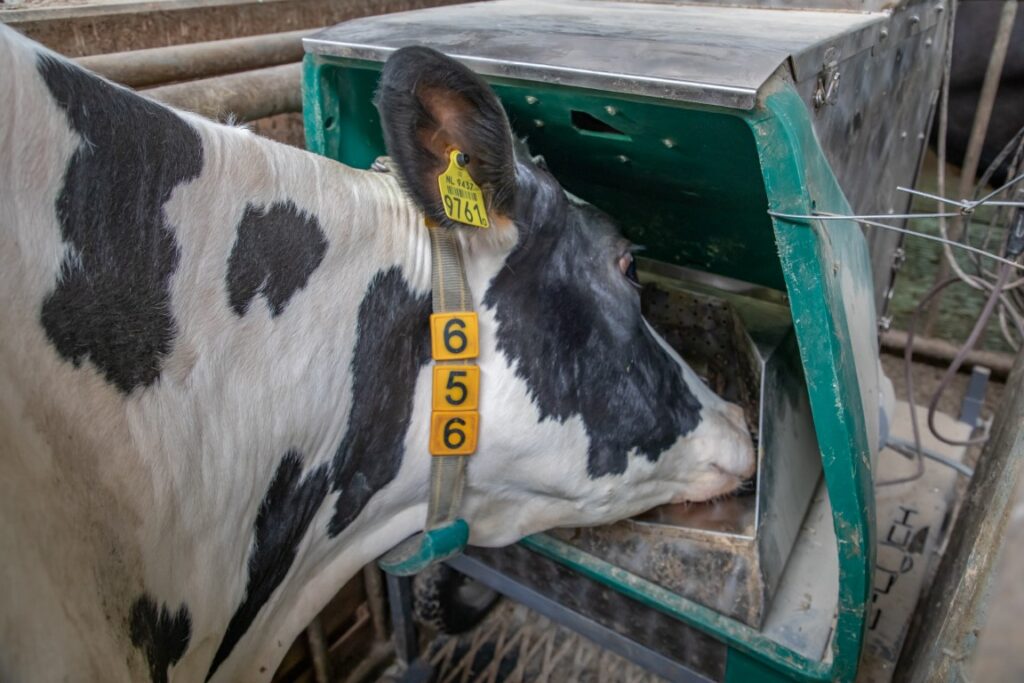Methane measurements at SFR with the Greenfeed
In the SFR dairy research facility, we offer the possibility to collect methane emission data in nutritional studies with a Greenfeed. SFR clients can request methane emission measurements as a part of dairy nutrition trials. This year the public private partnership RuMeHealth has started. Goal is to create a better understanding of how different feeding strategies, which have potential to reduce enteric methane production, can be applied best in different practical circumstances.
In the research facilities, we study the impact of feeding strategies, ration composition and additives on production and health parameters. Methane is now an additional parameter that can be measured in feeding trials.
Greenhouse gas emissions
Concerns about greenhouse gas emissions from livestock and dairy farms, as well as their connection to global warming and climate change, have grown among the general public worldwide in recent years. To evaluate these emissions, there is a need to use reliable methods. The ‘golden standard’ for assessing greenhouse gas emissions is measuring all incoming and outgoing gases from animals kept in climate respiration chambers. This is a very complicated and expensive method, and it does not reflect practical on-farm circumstances.
Enteric methane and other greenhouse gas emissions from ruminants can be mitigated in numerous ways including management of the animals, the diets and the manure. When further studying methane mitigating feeding strategies, it is important to evaluate if performance and welfare of the animals are supported as well. With the addition of the Greenfeed to the research facilities, SFR can contribute to address these questions.
Greenfeed system
The Greenfeed box is placed in the barn. It consists of a cubicle where small portions of concentrates are offered to attract the cows.

The box is fitted with a cow identification sensor, to ensure that each cow receives the correct amount of concentrate feed per day from the Greenfeed. The cows usually visit the box multiple times per day. While the animal is in the Greenfeed, the exhaled air of the cow enters the equipment. The apparatus registers the pipe air flow rate and methane and carbon dioxide concentration in the air sample. From these data, the amount of methane exhaled per cow per day is calculated.
Current developments
How can different feeding strategies which have potential to reduce enteric methane production, be applied best in different practical circumstances? In 2023, the public private partnership RuMeHealth has started to create a better understanding of this topic. For the upcoming 4 years, SFR will work in this consortium together with the Adaptation Physiology Group of Wageningen University as a knowledge partner, and with partners from the animal feed sector (ABZ De Samenwerking, Agravis, Berg&Schmidt, Felleskjøpet Fôrutvikling, Hankkija, Olmix, and Phibro Animal Health).